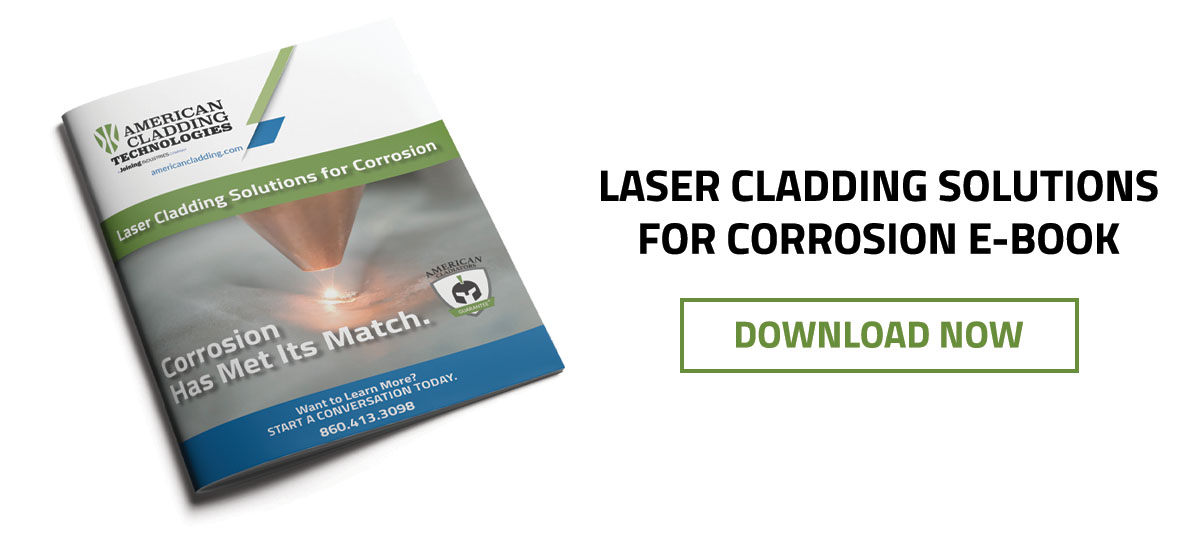The Need for Corrosion Solutions
Harsh environments are a fact of life in the power generation industry. Equipment is subjected to all kinds of abuse, from high temperatures and high pressure to fuel that is highly corrosive and erosive.
Laser cladding, also known as laser metal deposition (LMD), can solve many of these challenges by providing a highly corrosion-and erosion-resistant coating that extends the life of expensive components.
Compared to traditional additive processes, LMD provides corrosion-resistant coatings with:
- a strong metallurgical bond with higher material hardness
- less stress due to lower heat input
- lower powder costs due to thinner coatings
Here are just a few examples of how this corrosion solution can extend equipment life and prevent unplanned downtime in the power generation industry:
Superheater tubes: Laser cladding can significantly reduce corrosion in boiler tubes. Boilers at waste to energy facilities are subjected to temperatures of 1,600° – 2,000° F and pressures from 850 – 1200 psig. Typical superheater lifespan with Inconel 625 overlays is 16-24 months, after which the entire primary and secondary superheater is usually replaced at significant cost. By cladding a highly corrosive and erosive resistant coating onto the superheater tubes and platens, we have increased their lifespan from 16-24 months to 6 years.
Soot blowers: Soot blower lances are exposed to the same harsh environments as superheater tubes, resulting in downtime and high maintenance costs. Laser cladding the lances have extended their lifespan up to 6 times, reduced replacement costs, and significantly reduced maintenance time.
Valve applications: Valve balls and seats, and valve housing and casings are also exposed to extreme conditions in power generation plants, prompting the need for corrosion solutions.
LMD can mitigate wear and/or corrosion using a typical coating thickness of 0.025” to 0.050” and can achieve a coating hardness up to 70 HRC within 0.005”-0.008” of the base material.
Pump applications: In a centrifugal pump, wear of the impeller or other pump components can be worsened by suspended solids. In many cases, a wear-resistant laser clad coating can be applied to extend the component lifespan, or original material can be applied to the wear location to allow for component restoration.
In a twin rotary screw pump, the top flight of a screw is exposed to metal-to-metal rubbing contact with the casing or adjacent shaft screw, causing wear. To prevent wear, a laser hardfacing coating forms a metallurgical bond rather than a mechanical bond commonly found in thermal spray processes or spray and fuse applications. LMD also prevents wear to pump shafts and shaft components.
Many other components in power generation plants can benefit from using laser cladding as a corrosion solution. If you have questions about equipment not mentioned here, please visit our contact page to request more info.
